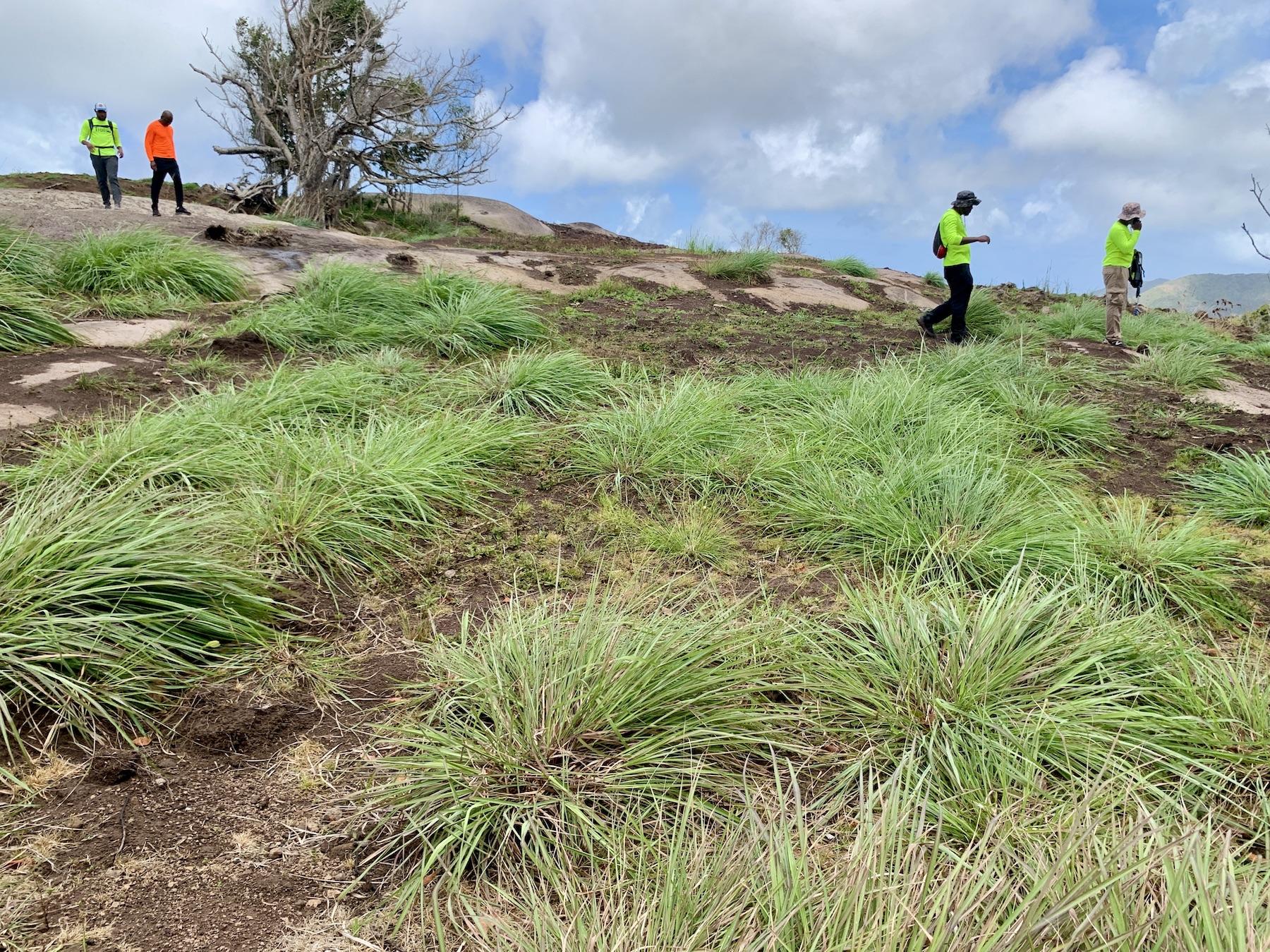
On top of Signal Hill in Antigua, invasive lemongrass has taken over/Jennifer Bain
Near the top of the hike up Signal Hill where Antigua’s last remaining rainforest gives way to rocky barrens, clumps of a long and deceptively pretty plant with a bright, citrus aroma sprout from the volcanic soil. It’s lemongrass — that ingredient we all love in Thai curries and soups, but an invasive species that grows fast and burns easily on this Caribbean island because of the high oil content in its leaves.
Known locally as fever grass, lemongrass makes a popular tea. But here in Wallings Nature Reserve — the island’s first community-managed national park — work is underway to remove it and replace it with food-producing trees like soursop and jackfruit.
“It smells nice but it is invasive,” Refica Attwood, the reserve’s founder and executive director says of fast-growing lemongrass. It was originally planted in a misguided attempt to control erosion, but its seeds are picked up by the wind and easily spread. She's creating a food forest so anyone who hikes up this hill and “forgot to have breakfast can have a plum, have a mango.”
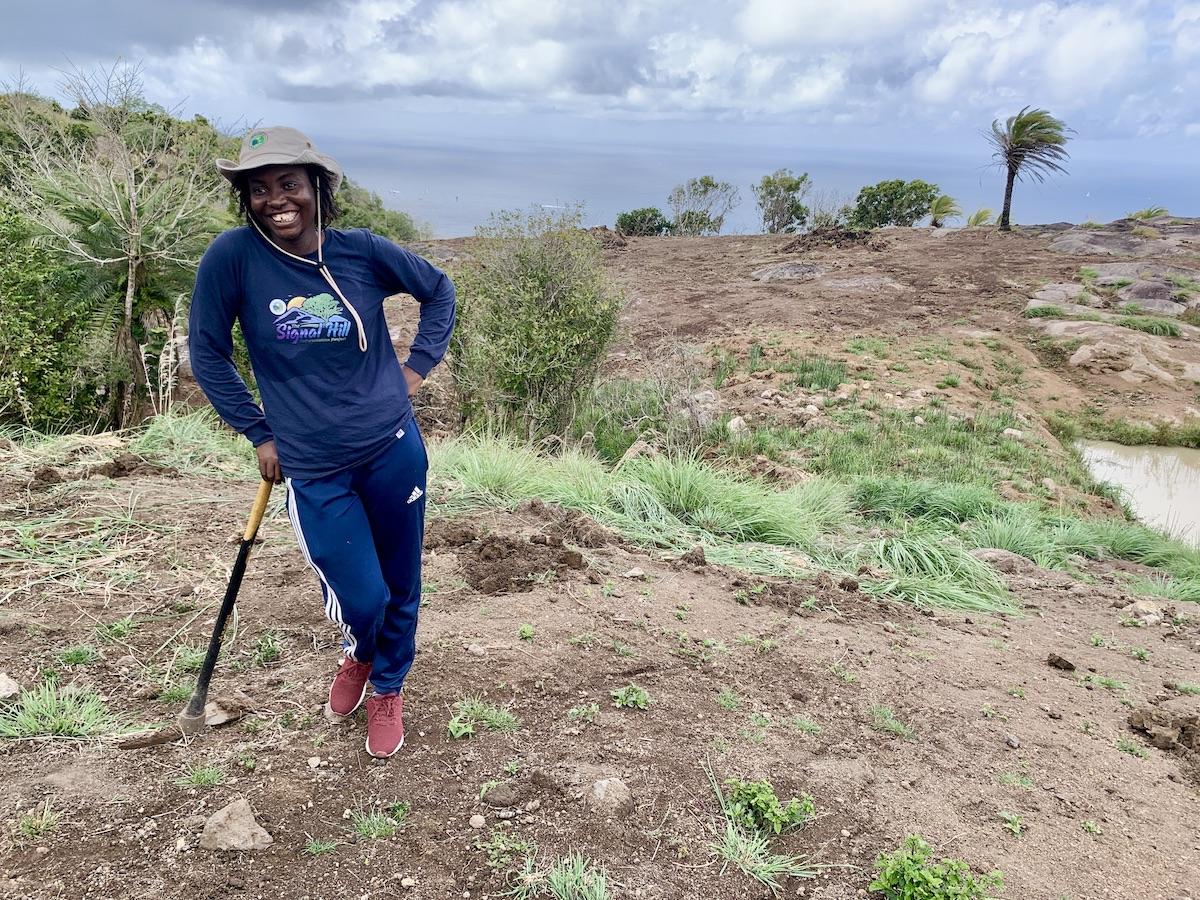
Refica Attwood is the executive director of Wallings Nature Reserve, a community-managed national park in Antigua. She's currently removing invasive lemongrass from Signal Hill and planting fruit trees/Jennifer Bain
The rainforest here in the southwest part of the island survived when the British razed most of the island’s tropical forests to plant sugarcane beginning in the 1600s, but the area wasn’t formally protected and became overrun with garbage and invasive species. Attwood, who grew up poor but learning about sustainable logging from her father, dabbled in housekeeping, waitressing, bartending, hospitality and event management before becoming Antigua's only female logger and then deciding that her true calling was in helping the forest (all before she turned 30 and as a single mother).
Attwood has since landed multiple project grants to clean up the land here off Fig Tree Drive, create trails, install trail flags, train guides and build a few modest facilities with a core group of 18 volunteers. The reserve was formally established in 2018 as a not for profit, non-government organization working on government land, and Attwood hopes to soon get full-blown national park status for full, legislated protection.
“We want to keep this space as green as possible,” she allows, admitting she currently works seven days a week.

Wallings Nature Reserve, Antigua's only remaining rainforest, starts with a wide path to a reservoir/Jennifer Bain
Wallings Nature Reserve monitors, maintains and manages 1,680 acres (680 hectares) of rainforest in the Shekerley Mountains. It protects the forest’s biodiversity with a goal “to create a sustainable product that can be duplicated in other communities, islands and countries regionally and internationally.”
At 1,198 feet (365 metres) and with views of the Caribbean Sea, Signal Hill is the second highest hill in Antigua and Barbuda, a former British colony and twin-island nation found between Puerto Rico and Barbados with a population of about 100,000. Mount Obama (Boggy Peak until it was renamed in 2009 to celebrate America's first Black president) is slightly higher at just over 1,300 feet (396 metres).
To help reforest Signal Hill and Wallings, groups like the U.S. Forest Service and the Sandals Foundation (which funds climate action across the Caribbean) have provided grants. As of May 3, 1,254 trees out of a planned 3,000 had been planted in the last year. They include ackee, avocado, bread fruit, cherry, cocoa, coconut, golden apple, guava, lemon, lime, sweet tamarind and more.
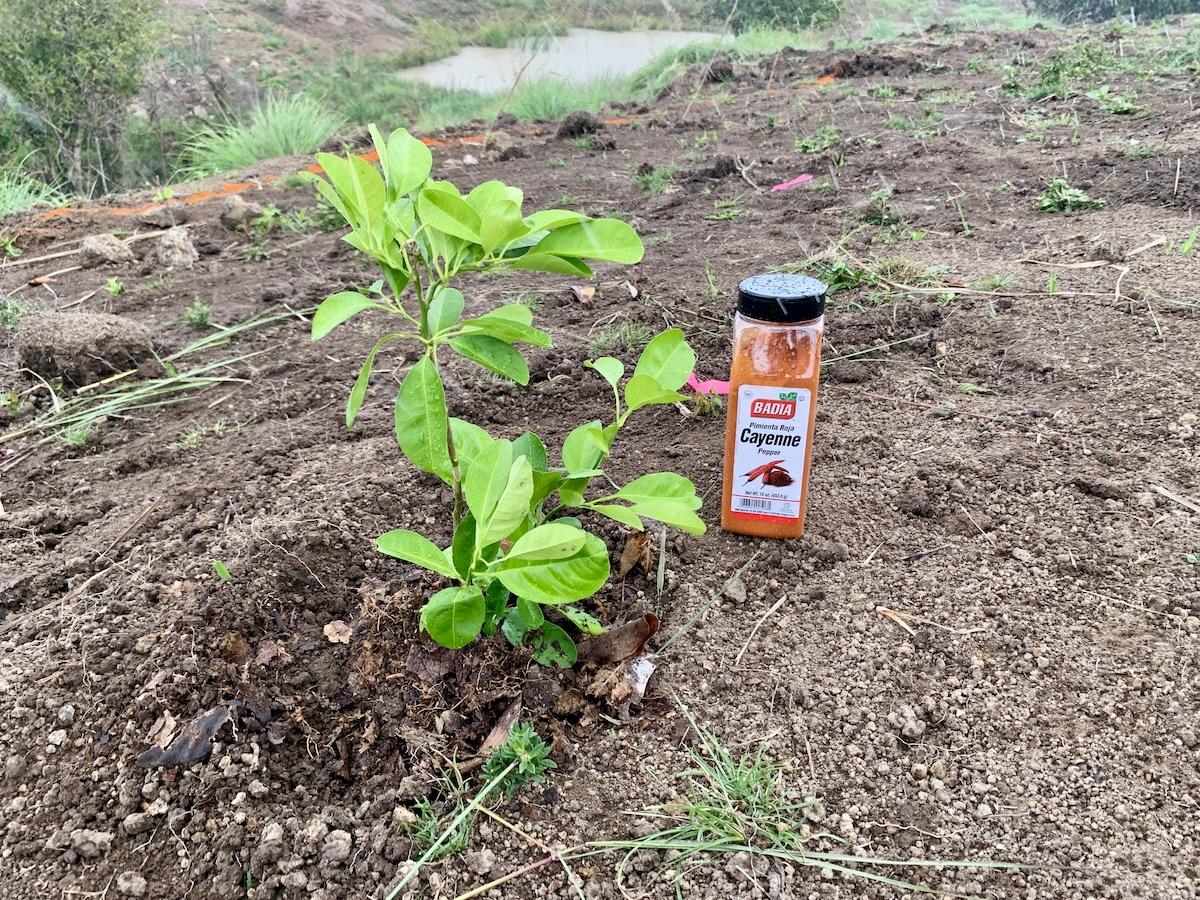
Cayenne pepper is sprinkled around new fruit trees on Signal Hill to repel pests/Jennifer Bain
On the tourism front, Wallings draws travelers who want meaningful, local experiences during resort vacations. It just earned a spot on the top 10 list of “Best Caribbean Attraction” in the USA Today 10Best Readers' Choice awards — a list dominated by national parks. “The best part is you’re immersing in Antigua’s sole remaining forest while contributing to its preservation and to supporting a locally operated attraction,” said 10Best contributor Lebawit Lily Girma.
Wallings came fifth right after Antigua’s crown tourism jewel — Nelson’s Dockyard National Park, a restored British naval dockyard and UNESCO World Heritage Site that boasts shops, restaurants, a museum and nature trails.
While you can go to places like Codrington Lagoon National Park to see the western hemisphere's largest nesting colony of frigatebirds, and Two Foot Bay National Park to see caves, those Barbuda park boundaries aren’t marked and there aren’t interpretive signs. Neither is Devil’s Bridge National Park on Antigua, a limestone arch formation with dramatic geysers and blowholes, that was within walking distance of the adults-only Pineapple Beach Club where I stayed.
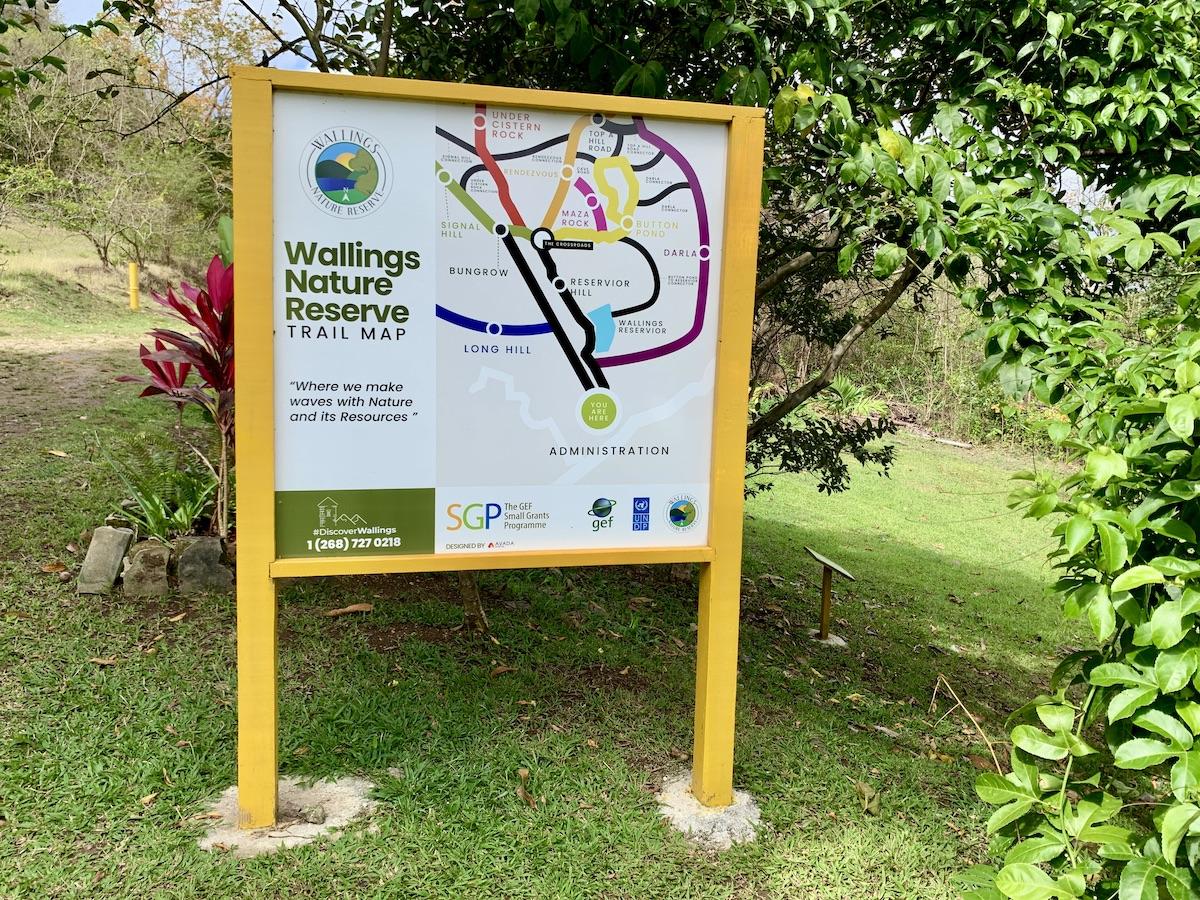
Trails are named, color-coded and well marked in Wallings Nature Reserve/Jennifer Bain
Wallings, just a half hour's drive from my resort, has bright welcome signs declaring that the area is protected by the Nagoya protocol (an international agreement that conserves genetic diversity, protect natures and ensures people can equally benefit from those important innovations that result from the study of genes). The signs list five steps to take before exploring, starting with checking in at the lime green administration building, registering and paying fees.
The various fees that are in place can also be paid online and in advance. A $6 (USD) entrance fee allows access to the reserve’s reservoir. Self-guided hikes cost $15. A 2.24-mile (3.6-kilometre) guided hike to Signal Hill costs $40 and typically lasts 90 minutes. With 48-hours notice, Wallings can even rustle up chicken, fish and vegan lunches with two sides, vegetables and a drink.
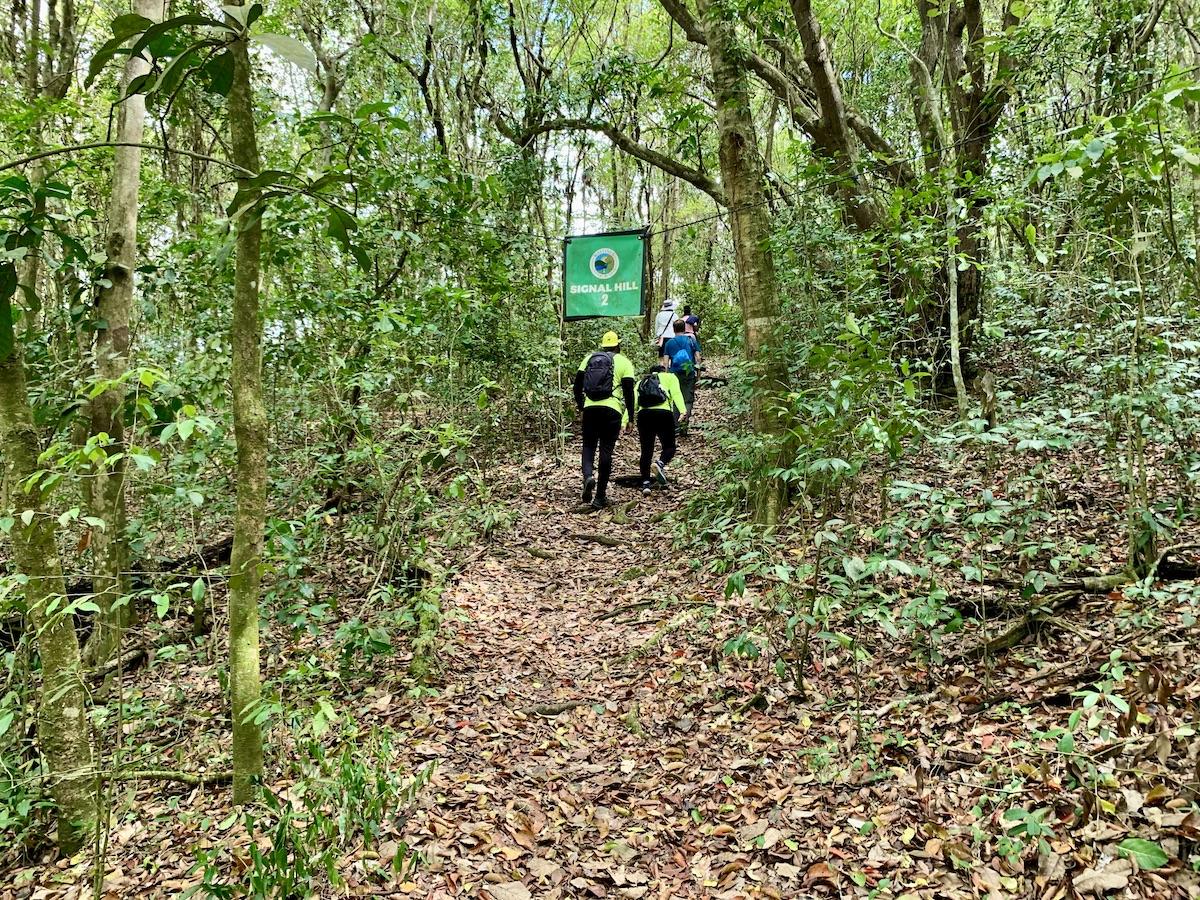
Trails are well-marked with flags at Wallings Nature Reserve/Jennifer Bain
Wallings draws tourists, locals and school groups. When I visit in early May, Attwood’s team heads up Signal Hill in the morning ahead of our group with trees for us to plant. The reserve is usually open 6 a.m. (for birders) to 6 p.m.
A group called 268 Trails, led by Jermaine Jarvis, guides us up Signal Hill after a quick prayer. Named for the island's area code, the hiking group formed during the pandemic when hiking was one of the only things people were permitted to do. The group, which counts about 100 members, helps cut and map trails around the island, although not here at Wallings.
“All for the love of hiking and having fun — and for good views,” says Jarvis, whose day job is deputy commissioner of the Inland Revenue Department.
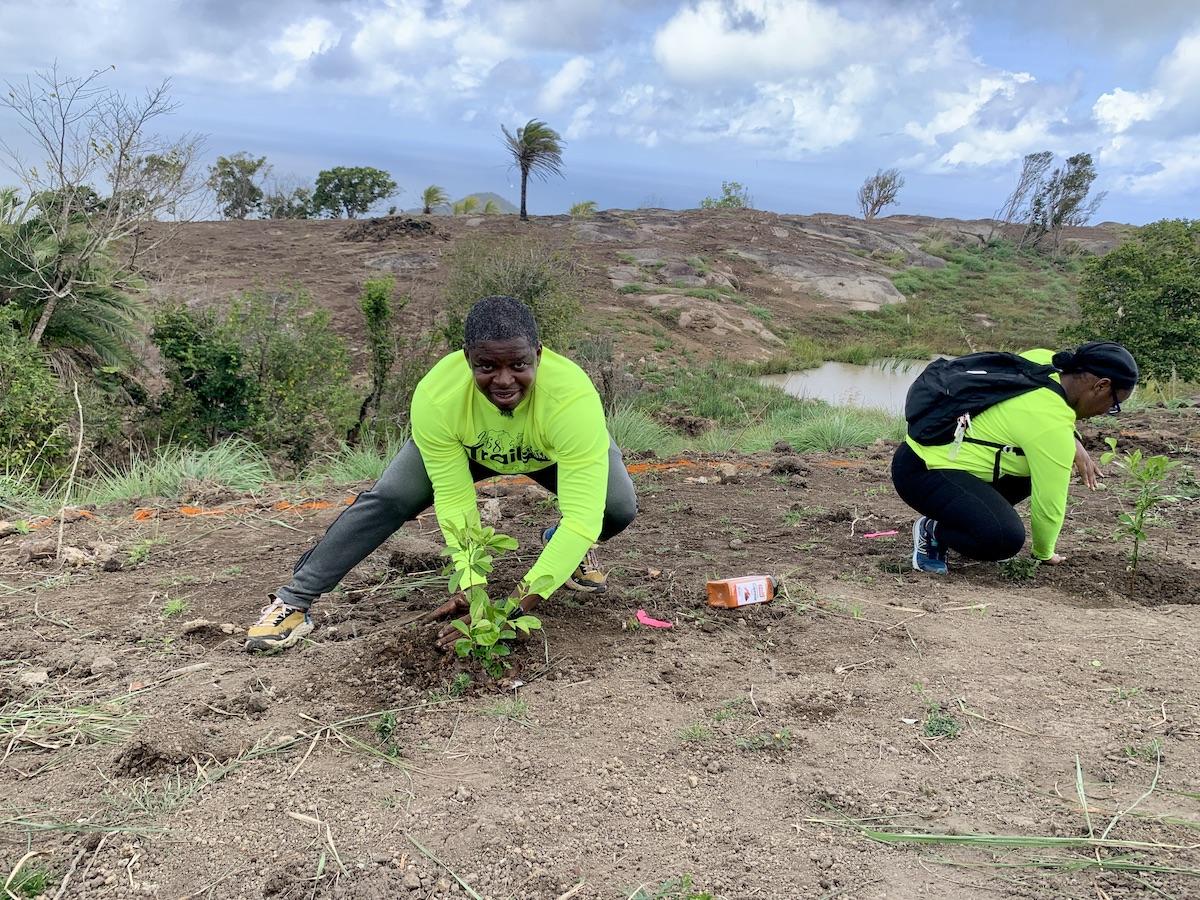
Jermaine Jarvis, left, and other hikers from 268 Trails, plant fruit trees on Signal Hill/Jennifer Bain
While we spot a slug and Caribbean hermit crab (also known as a soldier crab) along our Signal Hill trek, the main action is birds. They're easy to hear but harder to spot when you're on a fast-paced hike.
Jarvis admits he actually came at 6 a.m. to go birding before our hike and spotted 17 species. “I saw a Scaly-breasted Thrasher for the first time,” he says. “A Pearly-eyed Thrasher. A Scaly-naped Pigeon. You upload to eBird as a sort of citizen science.”
On the tree front, we learn that more than 40 species grow from the thin layer of volcanic soil here and that some approach 80 feet (24 metres).

This towering sandbox tree has a distinctive spiny trunk and heart-shaped leaves/Jennifer Bain
There are sugar apple and yellow prickle trees (with stout thorns) to admire, and the striking sandbox tree with its spiny trunk and heart-shaped leaves. Silk cotton trees (known locally as kapok) were apparently used during the world wars for “life belts and by old time Antiguans for mattresses and pillows.” The trees were home of “spirits” to the island’s original human inhabitants, the Amerindians. Nobody points them out, but Coccoloba pubescens (seagrape trees) are here, with gigantic leaves that are used to wrap a national, steamed dish called ducana, a tamale-like sweet potato paste made with coconut, sugar, flour and spices.
The most memorable sighting on the flora front, though, has to be massive termite nests wrapped around various trees. Jarvis stops to show how the tropical termites travel down tunnels on the bark in their quest to feed on the wood.

A termite nest in Wallings Forest Reserve/Jennifer Bain
There's no lemongrass (Cymbopogan citratus) at the start of the trail — it doesn't appear until we climb Signal Hill. But there is an interpretive sign detailing the importance of this conservation area and explaining that the sweet-smelling grass on much of the summit is lemongrass. “Introduced originally for soil erosion it has become a widespread weed in much of the Caribbean, well adapted to the fires set by livestock owners who burn the old growth to promote the young succulent growth,” the sign laments.
Luckily, there are no fires today, and no people on the trail other than our group. It's Labour Day and people are gathering with friends and family — perhaps at one of the beach parties organized by the rival political parties — to celebrate workers.

The sight of a near-empty reservoir in a drought-plagued country is sobering/Jennifer Bain
The vegetation in this rainforest is lush by Antiguan standards, apparently receiving 25 per cent more rain than the rest of the drought-plagued country. The rain falls on volcanic soil that’s full of nutrients but also dangerously thin. “Remove the tress and this productive topsoil goes with it,” signage warns, “as does the capacity of the ground to capture, store and gradually release water to the down slope areas during drier times.”
A reservoir — completed in 1900 to hold 13-million gallons of water to service 15 villages and 30 tanks — is disturbingly low. It was last recorded full on Sept. 11, 2020, and archival photos show it in earlier, fuller times. Indeed, Antigua is grappling with an ongoing drought.
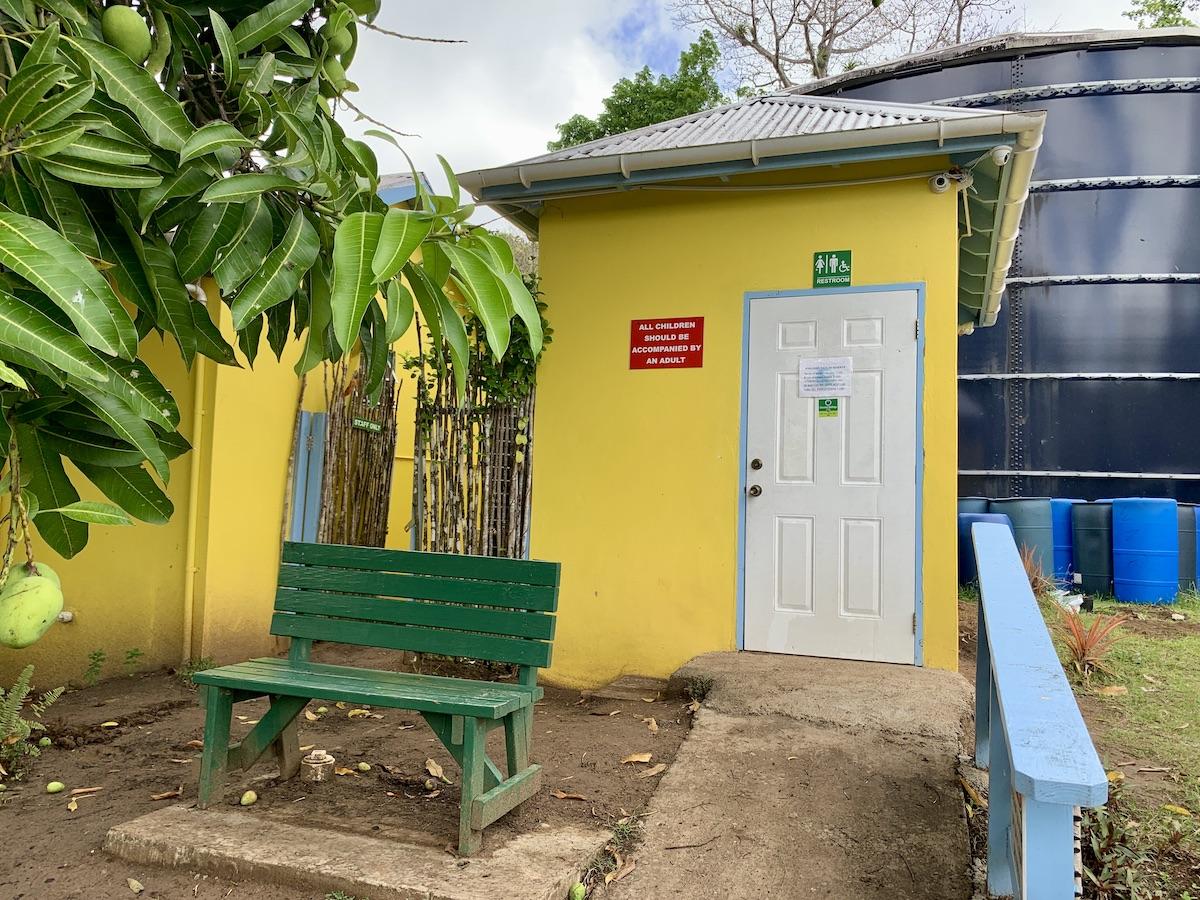
The accessible washroom at the start of the trail network/Jennifer Bain
So much has been done here at Wallings in just a few short years, but so much remains to be done.
There are plans to expand this watershed, and Attwood dreams of creating a tourism destination that offers yoga, forest massages, picnics and overnight camping. For now, the only washroom is the newly accessible one painted bright yellow that's behind a mango tree by the administration building. The $1 fee to use it helps pay for its upkeep.
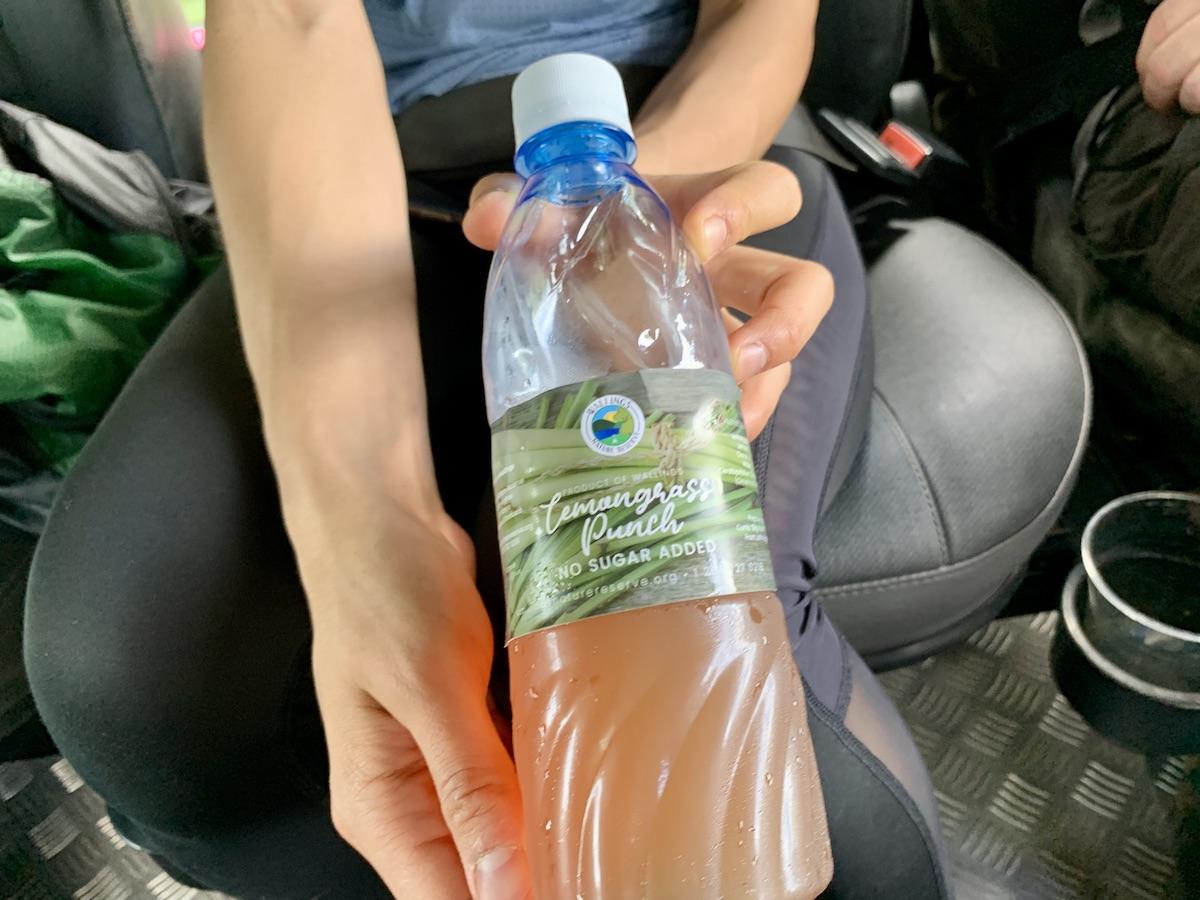
Invasive lemongrass is transformed into punch and other products at Wallings Nature Research/Jennifer Bain
So what becomes of all this invasive lemongrass being removed from Signal Hill?
Attwood says it's shared with the community and transformed into candles, lotions, soap, tea and drinks that are then sold in the tiny administration building to help fund the work that's being done here.
After several hours exploring the reservoir and Signal Hill, and a brief but fierce downpour that makes the hike back through the rainforest treacherous in spots, it's only fitting to end the visit to Wallings with an actual taste of lemongrass. I snag one bar of lemongrass soap ("reduces body odor and wrinkles") as a souvenir and buy enough lemongrass punch — some bottles with sugar and some without — to quench the thirst of our volunteer guides before everyone goes their separate ways to celebrate Labour Day.

 Support Essential Coverage of Essential Places
Support Essential Coverage of Essential Places